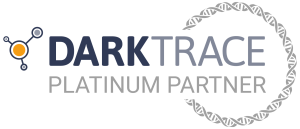Artificial Intelligence for Incident and Response
Since 2019, our incident response approach has been built on advanced detection powered by artificial intelligence and machine learning algorithms that ensure highly filtered and reliable alerts. This significantly reduces detection time, enabling our specialized team to act rapidly. The synergy between artificial intelligence, human intelligence, and expertise forms the foundation of our continuous improvement efforts.
Our state-of-the-art cybersecurity research team continuously identifies, evaluates, and rigorously tests a wide range ofavailable in the market. We take a highly selective approach to technology, prioritising those that we genuinely trust and believe to have a forward-thinking, innovative perspective on cybersecurity. Our aim is to ensure these solutions remain relevant and effective for at least the next five years. By doing so, we recommend investments with long-term potential, ensuring that every resource (time and money) dedicated to these solutions is truly worthwhile.
Service Managed Detection and Response
A service designed to deliver prompt and efficient responses to cyberattacks and security breaches, aimed at reducing the impact of incidents on business operations. It ensures that our team of experts is immediately available to assist your organization during the critical moments following the detection of an incident, delivering swift and effective support.
Certification
Our cybersecurity analysts and threat mitigation experts have secured mission-critical assets in national security environments around the clock, 24hours a day, 7 days a week , 365 days a year.
Our certified Security Operations Center (SOC) adheres to standardized processes, methodologies, and technologies across its locations in Spain, Colombia, and Panama. Operating under a "follow-the-sun" strategy, we ensure seamless service delivery, consistently applying cybersecurity best practices while staying close to our clients.
 An international recognition of the effectiveness of Sofistic's SOC internal controls and processes, demonstrating our commitment to the security and integrity of data.
An international recognition of the effectiveness of Sofistic's SOC internal controls and processes, demonstrating our commitment to the security and integrity of data.
 ISO 27001 promotes continuous improvement by requiring organizations to regularly review and update their ISMS (Information Security Management System) to ensure its effectiveness and relevance. This fosters a culture of continuous improvement in information security.
ISO 27001 promotes continuous improvement by requiring organizations to regularly review and update their ISMS (Information Security Management System) to ensure its effectiveness and relevance. This fosters a culture of continuous improvement in information security.
Being members of FIRST enables our incident response teams to respond more effectively to security incidents, both reactive and proactive.
Sofistic is a member and maintains strong relationships with numerous national and international cybersecurity centers, such as CSIRT.es, where it is an active member. The company also has a close relationship with the State Security Forces and the National Intelligence Center (CNI).
The certification of Spain's National Security Framework (Esquema Nacional de Seguridad) is essential to ensure the security of information and information systems in both public and private organizations across the country. It provides a solid regulatory framework and establishes clear requirements that help protect information assets and mitigate security risks.
Frequently Asked Questions about MDR (Managed Detection and Response)
MDR service contracts are annual.
To establish the service pricing, we rely on three key metrics:
- - Scope of Services: The number and complexity of cybersecurity solutions included in the contract.
- - Technology and Licensing: The cybersecurity tools deployed and their licensing levels.
- - Volume of Endpoints and Users: The total infrastructure to be monitored, influencing resource allocation.
By analyzing these factors, we estimate the annual case volume and define the optimal management methodology and team structure.Our approach is always cost-effective, it prioritizes cost efficiency while ensuring maximum incident response effectiveness at the lowest possible cost.
MDR (Managed Detection and Response) is a continuous 24x7x365 security service focused on detecting and responding to incidents in real time . Meanwhile, the SOC (Security Operations Center) serves as the secure physical facility equipped with high-availability infrastructure and advanced protection measures. Distributed across three countries, the SOC is the operational hub from which MDR services are delivered, ensuring seamless coverage and proactive threat management.




